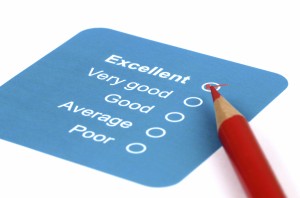 Last week we explored the development of the vision statement for diversity and inclusion. Once you have developed a compelling vision, it is time to establish goals and objectives. Just like any other planning process, you should start with an organizational assessment, cultural audit or environmental scan (I use the terms interchangeably). It is essential to understand how far away you are from your vision by asking the following questions regarding your organization’s current diversity climate.
Last week we explored the development of the vision statement for diversity and inclusion. Once you have developed a compelling vision, it is time to establish goals and objectives. Just like any other planning process, you should start with an organizational assessment, cultural audit or environmental scan (I use the terms interchangeably). It is essential to understand how far away you are from your vision by asking the following questions regarding your organization’s current diversity climate.
- Is your company a fair and equitable workplace?
- Analyze hiring, promotion, termination, performance appraisal, and compensation comparisons across diversity dimensions
- Is there diversity in your succession planning?
- Is there any evidence of disparate treatment by demographics or business unit?
- Is your culture inclusive?
- Collect and analyze engagement surveys that include questions about inclusive practices analyzed across diversity dimensions
- Conduct focus groups across different diversity dimensions to understand how groups experience the culture
- Are perceptions of fairness consistent across different demographic groups?
- Are perceptions of fairness consistent across business units?
- Evaluate programs such as employee resource groups, mentoring, training
- Assess leadership engagement
- Assess cultural competence
- What are the barriers hindering progress towards the desired state?
- What is your level of productivity and innovation? Are you leveraging diversity to achieve your business goals?
A cultural audit should contain both qualitative and quantitative elements. Quantitative surveys can answer the what (what are the differences in perceptions for example) and qualitative research (e.g. focus groups) can answer the why.
The cultural audit should be comprehensive and include all of your various employee segments, functional groups, divisions, etc. The key diversity dimensions that should be examined in your cultural audit include gender (both men and women), sexual orientation, generations, race/ethnicity, people with disabilities, length of service, and geographical location. You will want to be able to analyze by various sub-groups and different combinations such as millennial Latino men or white men in the Midwest region.
The Winters Group has developed a quantitative survey to gauge employees’ perceptions. The survey gathers data on employees’ knowledge, awareness and perceptions of diversity and inclusion at the organization as well as how they perceive the inclusiveness of policies, procedures and practices.
When conducting focus groups as part of a cultural audit we use the following questions:
- What is it like to work at XXX? What is the best thing about working for XXX? What do you like least?
- What does it take to get ahead or succeed at XXX?
- Who are the heroes and heroines?
- What stories are shared about the history of the organization?
- What do you think “diversity” means at XXX? Why is diversity important to XXX?
- What do you think inclusion means? How is it demonstrated?
- How do leaders at XXX show that they value diversity on a daily basis? How does your manager show he/she values diversity on a daily basis?
- What is it like as a <social identity group> to work here? How are differences addressed within the organization? By HR? By your manager? By other team members?
- To what extent do you think the processes at XXX are fair and equitable (e.g., performance management, pay, employee development, recognition)?
- What diversity learning would you most benefit from? Other team members? Leaders?
- Are there other issues you would like to share?
In addition to the internal analysis, a comprehensive cultural audit should include external benchmarking to review best practices and public/community perceptions of your organization. The cultural audit process, when done well, will reveal those areas in which your organization excels and those that need additional attention. The goals and objectives are developed based on the findings of the cultural audit.



















Great article!
Perhaps adding an analysis of retention across diversity dimensions might be good. There are a some companies where asking questions like the ones you’ve suggested is good, but answering them honestly isn’t good. Who stays and who goes (voluntarily or from being released) could provide validation information. A considerable number of companies have reduced workforce numbers in the last few years as well. So hidden or not hidden biases could be uncovered as well. As a note, perhaps the audit should be done from outside the organization so HR is included.
I’m happy seeing you included hiring. If the corporation uses outsourced or independent channels for recruiting, perhaps they should be audited as well. Since these would be independent companies or contractors, the audits could be trickier. At the very least, a corporation could create a training package about diversity in the corporation as well as specific corporate culture so the subcontracted entities would be clear. A internal review of incentives for these non-corporate entities as well as initial screening practices could reveal some unintentional restrictions on diversity recruiting.
Hi
Thanks for your comments. Really great additions to the auditing process! Really appreciate your thought leadership.